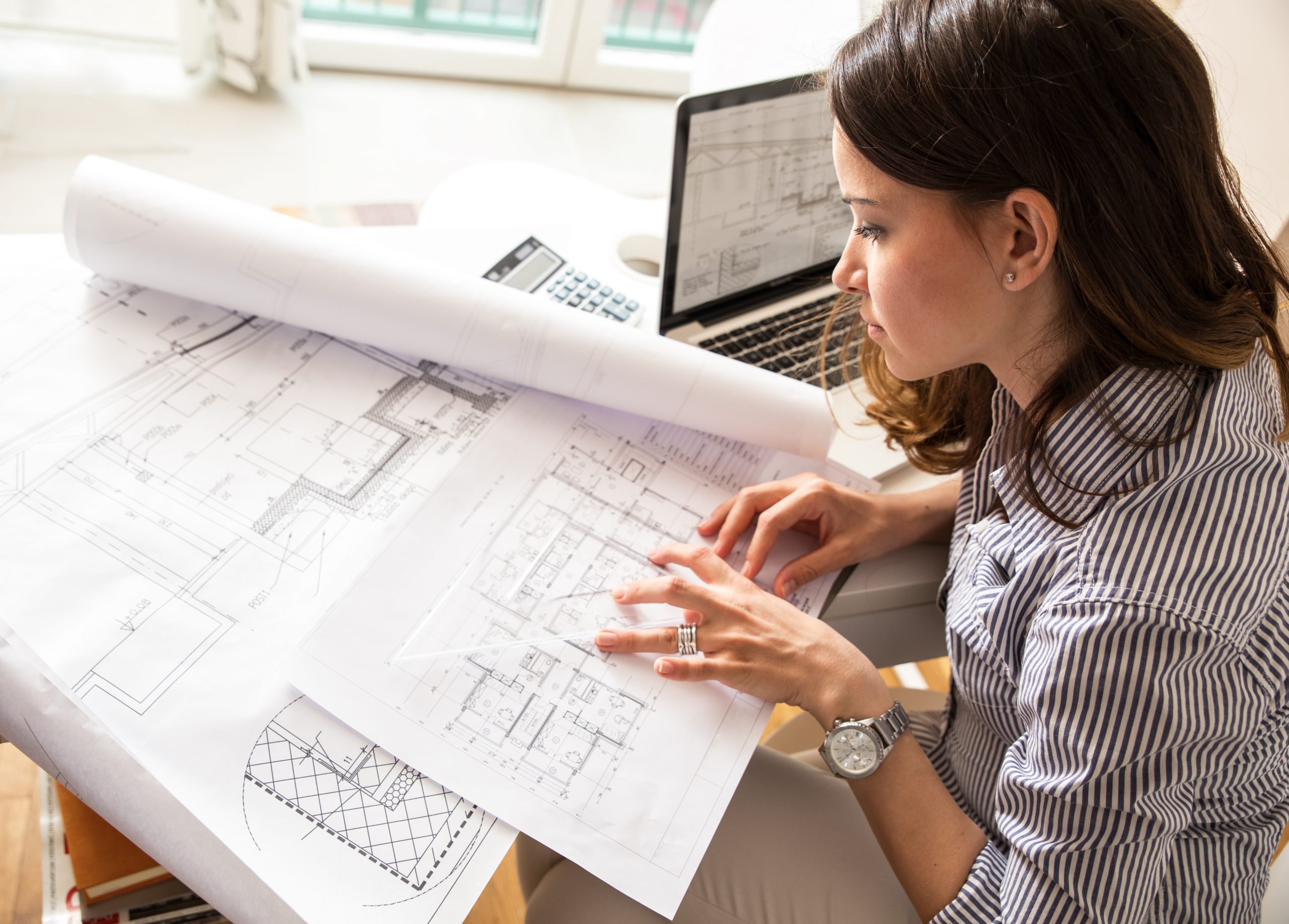Comprehending the Diverse Career Paths Available for Aspiring Architect
As an aspiring Architect, you have a world of job paths awaiting you. Each path supplies distinct obstacles and chances to use your imagination and technological know-how. Whether you're drawn to typical style or the nuances of sustainable design, there's a particular niche that lines up with your passions. Understanding these varied alternatives can form your specialist journey, yet which direction will you select to discover first?
Typical Architecture: Designing Frameworks and buildings
Standard style focuses on developing buildings and frameworks that mix functionality with aesthetic charm. As you discover this area, you'll appreciate the elaborate balance between type and objective. You'll find out to attract inspiration from historical styles, integrating aspects like balance, products, and workmanship. Your styles can show cultural heritage, showcasing regional customs while satisfying contemporary requirements.
You'll develop skills in composing, model-making, and site analysis, allowing you to visualize and connect your ideas successfully. Involving with customers, you'll require to recognize their vision and translate it right into possible layouts.
In addition, constructing codes and sustainability methods are crucial in your job, guaranteeing your structures are safe and environmentally pleasant. As you grow in your job, you'll locate chances in property, industrial, and even reconstruction tasks, each offering one-of-a-kind difficulties. Welcoming traditional architecture leads the way for a meeting career that admires the past while shaping the future.
Urban Preparation: Forming Neighborhoods and Public Spaces
As an ambitious Architect, you can play a necessary function as a metropolitan organizer, transforming exactly how areas work and communicate. By utilizing community engagement approaches, you'll ensure that citizens have a voice in shaping their setting. Plus, incorporating sustainable style concepts will aid produce rooms that not only fulfill today's requirements yet also shield the future.
Function of Urban Planners
While several could assume of engineers as the single enthusiasts behind buildings, urban planners play a necessary function in shaping the wider landscape of neighborhoods and public areas. By working together with different stakeholders, you'll aid make parks, transport systems, and household areas that promote social interaction and availability. Your knowledge in spatial layout and community dynamics enables you to picture future development while preserving social heritage.
Area Engagement Methods
Effective community engagement strategies are vital for city coordinators to assure that the voices of locals are heard and valued in the preparation process. To foster meaningful discussion, you must prioritize open discussion forums and workshops where neighborhood participants can express their concepts and problems. By actively listening and integrating responses, you'll create areas that mirror the area's needs, ultimately leading to more successful and sustainable urban environments.
Sustainable Design Principles
When making urban spaces, incorporating sustainable layout principles is critical for developing atmospheres that flourish both environmentally and socially. You must start by focusing on energy effectiveness, using products that minimize waste and promote recycling. Think about incorporating green rooms, like parks and gardens, to enhance biodiversity and boost air top quality. Advertising walkability and public transport can minimize dependence on autos, cultivating a much healthier community.
Designing with water preservation in mind is likewise key-- assume regarding rain yards and permeable surface areas to handle stormwater. Involving area members throughout the planning procedure assurances that the rooms you produce fulfill their demands and encourage social communication. By accepting these principles, you'll add to lively, lasting urban landscapes that profit everyone.

Landscape Design: Developing Lasting Outdoor Settings
As you check out landscape design, you'll discover crucial layout principles that develop attractive and practical outside spaces. Lasting practices play a vital function in guaranteeing these settings flourish while minimizing ecological impact. And also, you'll find a range of career possibilities that allow you to make an actual difference in exactly how people engage with nature.
Design Principles in Landscape
Understanding style concepts in landscape architecture is necessary for creating sustainable exterior environments that balance with nature. You'll require to contemplate elements like equilibrium, scale, and proportion to ensure your layouts really feel cohesive and welcoming. Incorporating native plants not just boosts biodiversity but likewise lowers water use, making your landscape resilient. Think of the flow of space and exactly how individuals interact with it; pathways and seating areas need to invite expedition and relaxation. Furthermore, focus on seasonal changes, making with products that enhance the environments year-round (Architect). By prioritizing sustainability and visual appeals, you can produce outdoor areas that enrich the neighborhood and advertise well-being. Embracing these principles will set a strong foundation for your profession in landscape design.
Lasting Practices Review
Lasting practices in landscape design not just focus on aesthetics however likewise focus on ecological health and source preservation. You can design areas that advertise soil health and wellness, such as exercising and making use of natural products permaculture principles. Eventually, these techniques assure your styles profit both individuals and the environment for years to come.
Profession Opportunities Expedition
With a solid structure in sustainable practices, landscape style supplies a selection of occupation paths that permit you to make a purposeful effect on the atmosphere. Urban planners frequently collaborate with landscape engineers to produce environment-friendly areas in urban setups, improving city livability. If you're passionate concerning education, take into consideration ending up being a landscape architecture instructor, motivating future generations.
Sustainable Layout: Concentrating On Eco-Friendly Practices
As you discover your profession in architecture, welcoming eco-friendly techniques can set you apart in a competitive field. Lasting layout concentrates on producing structures that decrease ecological effect while enhancing resident wellness. By integrating sustainable materials, energy-efficient systems, and sustainable building techniques, you'll contribute to a greener future.
Start by gaining knowledge of eco-friendly certifications like LEED or BREEAM, which can reinforce your qualifications. Take into consideration how natural light, air flow, and thermal performance can optimize style. Team up with engineers and environmental experts to introduce solutions that decrease waste and save sources.
Don't neglect the importance of community involvement-- appealing regional stakeholders can motivate layouts that integrate with the environment. As clients increasingly prioritize sustainability, your proficiency in environment-friendly techniques will certainly not just bring in tasks yet additionally accomplish your interest for responsible architecture. Embrace this essential aspect of the profession, and view your profession thrive.
Historic Preservation: Protecting and Restoring Cultural Heritage
While you start on your building trip, think about the necessary function of historic preservation in keeping our social heritage. This field concentrates on the defense and reconstruction of substantial structures, sites, and structures that inform the tales of our past. By engaging in historic conservation, you'll aid secure the architectural tradition that forms area identity.
As a historical preservation Architect, you'll examine historical significance and examine the condition of frameworks. You'll work very closely with preservationists and historians to assure authentic reconstruction methods are employed. This occupation path permits you to blend creative thinking with research, allowing you to develop solutions that value original products and craftsmanship.
Your job not just adds to sustainability by reusing existing structures yet likewise promotes a feeling of pride within neighborhoods. Accepting this course will certainly aid you become a guardian of history, protecting the tales and aesthetics that enrich our lives.
Inside Architecture: Enhancing Indoor Spaces
Historic preservation and interior style both share a dedication to enhancing the built environment, yet they concentrate on various aspects. While historic conservation highlights maintaining a structure's historic and cultural worth, interior design zeroes in on maximizing indoor areas for functionality and aesthetics.
As a hopeful Architect, you'll discover that interior design permits you to blend imagination with technological skills. You'll design areas that not just look good however additionally advertise convenience and efficiency. This area involves comprehending exactly how light, color, and materials engage within a room, influencing state of mind and usability.
You'll work with various projects, from property homes to industrial workplaces, making certain that each setting fulfills the demands of its owners. By focusing on customer experience, you can change insides into inspiring and practical areas, making a substantial influence on how people connect with their environments. Accept the chance to enhance indoor settings and form the method people live and work.
Industrial Layout: Combining Performance With Appearances
Commercial style plays a necessary function in creating products that flawlessly mix aesthetic appeals with performance, making sure that what you use daily is not just aesthetically attractive however likewise functional. As a hopeful Architect, you could involve on your own in this field, concentrating on designing everything from furnishings to customer electronic devices. Your job includes understanding customer demands, products, and manufacturing processes, allowing you to develop cutting-edge options that improve everyday experiences.
In industrial layout, you'll often collaborate with engineers, click for source manufacturers, and marketing professionals, making sure that your layouts are not only stunning but likewise viable. You'll find out to balance type and feature, prioritizing usability without compromising design. By honing your skills in mapping out, 3D modeling, and prototyping, you'll be well-appointed to bring your ideas to life. This profession path uses a vibrant setting where creativity meets functionality, making it a satisfying selection for architects thinking about shaping the products of tomorrow.
Often Asked Questions
What Educational Certifications Do I Required to End Up Being an Architect?
To come to be a designer, you'll need a specialist degree in architecture, commonly a Bachelor's or Master's. Furthermore, you'll have to finish a teaching fellowship and pass the Architect Enrollment Evaluation to practice lawfully.
Are There Qualification Demands for Various Building Career Paths?
Yes, there're certification demands for numerous building courses. Architect. You'll require useful reference to pass examinations, complete teaching fellowships, and occasionally go after specialized training, depending on your picked focus, like landscape style, urban style, or historic preservation
What Software Skills Are Essential for Engineers Today?

Just How Can I Gain Practical Experience While Examining Architecture?
You can obtain functional experience by interning at architectural companies, taking part in layout competitions, offering for neighborhood tasks, or working together with classmates on real-world tasks. These opportunities boost your abilities and develop beneficial connections in the sector.
What Task Opportunities Exist Outdoors Conventional Style Firms?
You can explore numerous job possibilities outside conventional style firms, like metropolitan planning, interior decoration, landscape design, building and construction administration, realty development, or also roles in sustainability consulting. Each offers one-of-a-kind obstacles and rewards.
Whether you're attracted to conventional style or the nuances of lasting layout, there's a particular niche that lines up with your interests.When making urban areas, including sustainable design principles is crucial for producing environments that flourish both environmentally and socially.As you discover landscape architecture, you'll discover essential style concepts that develop stunning and practical outside spaces.Comprehending style concepts in landscape style is necessary read the full info here for developing lasting outside atmospheres that balance with nature.In commercial layout, you'll typically collaborate with online marketers, makers, and engineers, ensuring that your designs are not only lovely but likewise viable.